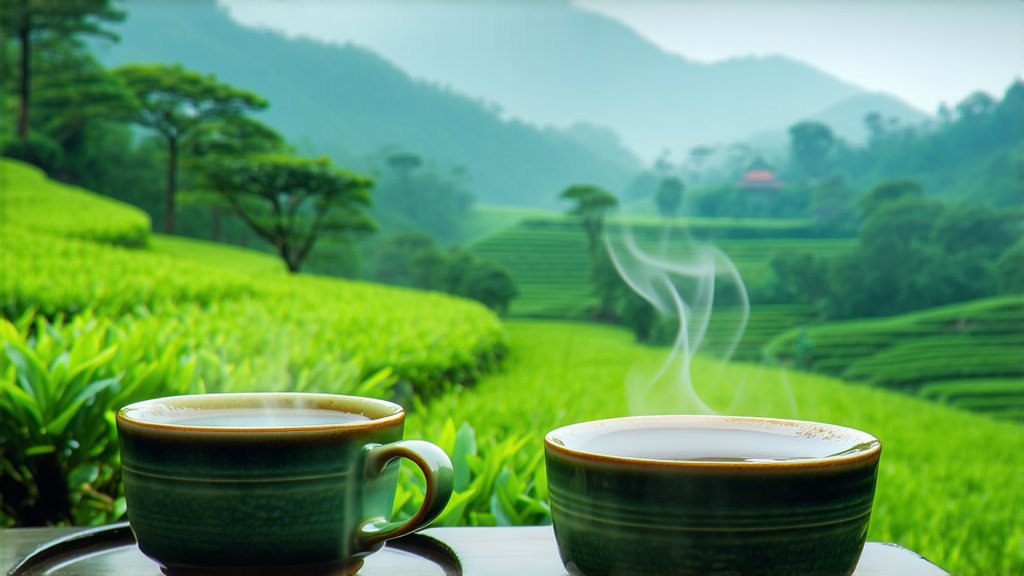
In the vast and diverse landscape of Chinese tea culture, few varieties hold as prestigious a position as Longjing Tea, also known internationally as Dragon Well Tea. This iconic green tea, hailing from the picturesque villages surrounding West Lake in Hangzhou, Zhejiang Province, has captivated tea enthusiasts for centuries with its unique flavor profile, exquisite appearance, and rich cultural heritage. As we embark on a journey through the annals of Longjing Tea, we unravel the intricate tapestry of its history, delve into its distinct varieties, explore its meticulous production process, and uncover the art of its appreciation.
Historical Roots: A Journey Back in Time
Longjing Tea's origins can be traced back to the Tang Dynasty (618-907 AD), but it was during the Qing Dynasty (1644-1912) that it truly gained prominence. Legend has it that Emperor Kangxi of the Qing Dynasty was so enamored by the tea's exceptional quality that he bestowed upon it the imperial name "Longjing," meaning "Dragon Well," after the famous spring nearby where the tea was traditionally processed. Over time, Longjing became synonymous with excellence in Chinese tea, often presented as tribute to emperors and cherished by scholars and poets who praised its delicate aroma and refreshing taste.
Varietals: A Symphony of Flavors
Longjing Tea is not a single homogeneous entity but rather a family of teas characterized by their flat, sword-like leaves and vibrant green hue. The two primary sub-varieties are Lu’an Guapiao and Xihu Longjing, each with its own unique terroir-driven characteristics. Lu’an Guapiao, grown in Anhui Province, features a more robust flavor profile with hints of chestnut and orchid, while Xihu Longjing, cultivated around West Lake in Hangzhou, boasts a smoother, sweeter taste with notes of jasmine and fresh grass. These subtle differences reflect the distinct microclimates and soil compositions of their respective regions, adding depth and complexity to the Longjing experience.
The Art of Crafting Longjing Tea
The production of Longjing Tea is a testament to the artisanal skill and dedication that defines Chinese tea making. It involves a series of meticulous steps designed to preserve the natural flavors and nutritional properties of the tea leaves. Here’s a closer look at the traditional craftsmanship behind this revered beverage:
-
Hand-Picking: Only the youngest, most tender leaves—typically the bud and the first two leaves—are harvested by skilled workers. This selective picking ensures the highest quality tea with optimal levels of antioxidants and other beneficial compounds.
-
Withering: The freshly picked leaves are spread out thinly on bamboo trays to undergo a natural withering process. This step allows excess moisture to evaporate, softening the leaves for subsequent processing while concentrating their flavors.
-
Fixation: Heat is applied to halt enzymatic activity that would otherwise lead to oxidation. In the case of Longjing, this is achieved through pan-frying or roasting over charcoal fires. The masterful control of heat and timing during this stage is crucial in developing the tea's signature fragrance and preventing bitterness.
-
Shaping: The heated leaves are then hand-shaped into their distinctive flat, needle-like form. This labor-intensive process requires great dexterity and years of practice to perfect, as each leaf must be individually manipulated to maintain uniformity and aesthetic appeal.
-
Drying: Finally, the shaped leaves are slowly dried to remove any remaining moisture, ensuring longevity without compromising freshness or flavor. The drying temperature and duration vary depending on the specific variety and desired end product.
Appreciating Longjing Tea: A Sensory Experience
To truly appreciate Longjing Tea is to engage all five senses in a harmonious dance of sight, smell, touch, sound, and taste. Here’s how one might embark on this sensory exploration:
-
Visual Delight: Observe the dry leaves, noting their vibrant green color and slender shape. Upon steeping, watch them unfurl gracefully in hot water, revealing a mesmerizing dance that mirrors the tranquility of its namesake, Dragon Well.
-
Aromatic Invitation: Inhale deeply before sipping to capture the tea's subtle yet complex bouquet. Notes of jasmine, fresh grass, and a hint of roasted nuts may greet your olfactory senses, inviting you into a world of refined elegance.
-
Tactile Warmth: Feel the warmth of the teacup in your hands, a comforting reminder of the care and craftsmanship invested in every cup. The smooth texture of the liquid against your palate further enhances the overall sensory experience.
-
Soundscape of Steeping: Listen to the gentle hissing sound as hot water meets the tea leaves, a prelude to the symphony of flavors soon to unfold. This auditory cue signals the beginning of the steeping process, which typically lasts between 2-3 minutes for optimal extraction.
-
Flavor Symphony: As you take your first sip, allow the tea to linger on your tongue, savoring its initial sweetness followed by a lingering umami finish. The balance between astringency and sweetness, along with a clean, refreshing aftertaste, defines the hallmark of Longjing Tea.
In conclusion, Longjing Tea stands as a shining example of China's rich tea heritage, embodying a perfect blend of tradition, artistry, and nature's bounty. From its storied past to its meticulous production methods and multifaceted tasting experience, Longjing offers a window into the soul of Chinese tea culture. Whether you're a seasoned connoisseur or a curious newcomer, exploring Longjing Tea promises an unforgettable journey through the verdant landscapes and ancient wisdom of China's green elixir.